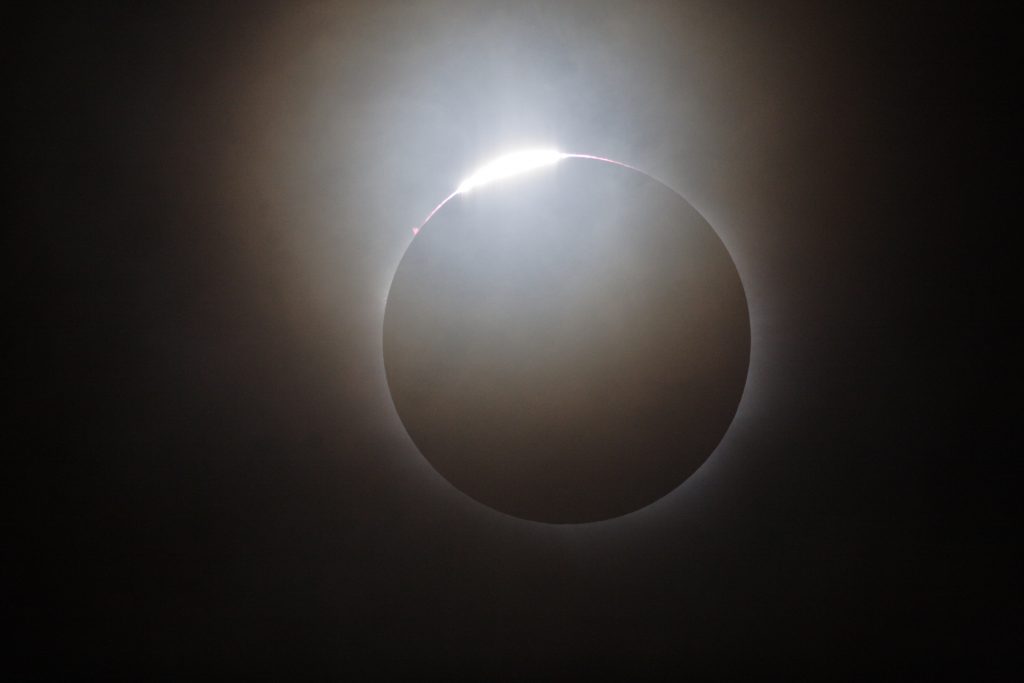On August 21, the moon will cross paths with the sun, prompting North America’s first total solar eclipse since 1979. We’ll see about 80% totality of the eclipse in our area, but you can experience 100% totality with a timely new special from NOVA! Airing just hours after the eclipse happens, Eclipse Over America gives you the best seat in the house, helping you to explore the entire eclipse from start to finish from science labs and public observatories. Look back on its mystifying history, follow current cutting-edge research, and unlock scientific secrets about the solar corona. You can see NOVA: Eclipse Over America on August 21 at 9PM on KVIE.
This solar eclipse begins at 9:06AM in Madera, Oregon and will cover 14 lucky states, ending in Columbia, South Carolina.

If you’re looking to experience the event in person, it’s important to be prepared. Here are a few ways you can safely enjoy the solar eclipse.
Watch the cosmic phenomenon directly with American Astrological Society-approved eclipse-viewing glasses.
Special eclipse-viewing glasses have been made so that we can enjoy the solar eclipse without worrying about extreme eye damage, but beware of glasses that aren’t approved by the American Astrological Society.
How do I know my eclipse glasses are safe? Look for text on your glasses that’s says they comply with the ISO 12312-2 international safety standard for directly viewing the sun. You can find a list of approved solar-filters here.
*Sunglasses are NOT adequate protection for safe solar viewing.
Make a DIY pinhole projector.
- Here’s what you need:
- One empty cereal box
- One sheet of paper
- Scissors
- Aluminum foil
- One pin
Yes, that’s really all you need to make a DIY pinhole projector. This is a fun and safe way to get the kids involved in a real-life scientific project. You can find full instructions for a pinhole projector here.
Attend one of these solar eclipse viewing parties in your community!
Here are a few places you can watch the solar eclipse with other science enthusiasts and maybe discover something new along the way.
Where: California State University, Sacramento
When: August 21, 9AM
Join other eclipse-viewers atop the American River Levee alongside the Sacramento State campus. Telescopes with solar filters, pin hole cameras, and some eclipse-viewing glasses will be available. Get there early to secure yours and find out more here.
Where: Powerhouse Science Center, Sacramento
When: August 21, 9AM
Enjoy a solar eclipse celebration with members of the Sacramento Valley Astronomical Society on the Powerhouse Science Center grounds. The event is free to the public. Additionally, there will be eclipse-themed planetarium shows with paid admission. View more information here.
Where: Stanislaus County Library, Modesto
August 21, 9:45AM – 10:45AM
View the solar eclipse from the from steps of the library and observe the celestial event of the season. Find out more here.
Where: Great Valley Museum, Modesto Junior College
When: August 21, 8AM – noon
View the eclipse through a special sun telescope with members of the Modesto Junior College Astronomy Club. Two eclipse-themed shows at the planetarium. The 8:30AM showing will feature Back to the Moon and the 11:30AM showing will feature Sunstruck. Find out more here.
Watch a livestream of eclipse on PBS NewsHour
PBS NewsHour and NOVA are teaming up to bring you a livestream of the solar eclipse. Watch in real time online here.